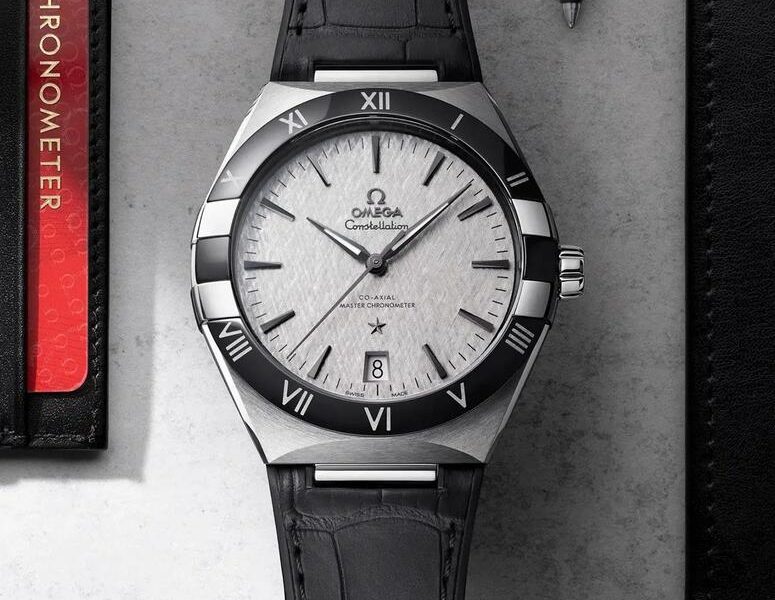The Omega Constellation is not only the Swiss luxury brand’s oldest collection (if we’re tracing the Seamaster back to its first “Professional” dive-watch model in 1957); it’s also the dressiest, with a design heritage that hinges on two classic and very iconoclastic high quality Omega replica watches from two distinctively different eras: the cult-classic original from the 1950s and the influential revamp in the 1980s. Here’s an in-depth look at the Omega Constellation, its half-century-plus of revolutionary design, and what the collection looks like today.
1952: Making a Pie
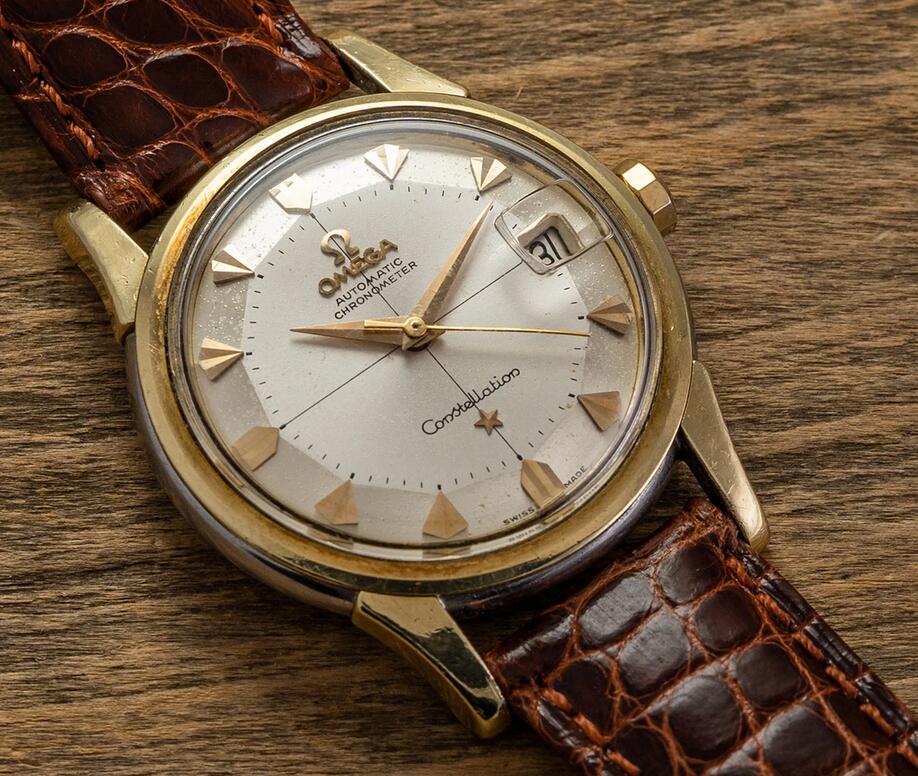
Omega, founded in 1848 by an ambitious young Swiss watchmaker named Louis Brandt, celebrated its 100th anniversary in the postwar year of 1948. The most memorable watch the company released during that milestone year, most would agree, was the first Seamaster, which introduced the innovative waterproof system that would give rise to today’s sprawling Seamaster Professional collection of dive 1:1 Omega fake watches. A rarer and more obscure timepiece introduced that year was the Centenary, Omega’s first chronometer-certified wristwatch. An iconoclastic gold dress watch, highly limited in production, the Centenary took its name from the 100-year anniversary it commemorated and its design would provide the template of a collection that would debut several years later, in 1952, called the Constellation. (Both the Seamaster and the Centenary, incidentally, were the brainchildren of watch designer René Bannwart, who would go on to create the Corum brand.)
The UK best Omega Constellation replica watches took its astronomical name from the now-famous relief emblem that occupied its caseback and the achievements that it symbolized: a rendering of the Geneva Observatory with eight stars shining above it, representing Omega’s eight chronometric awards attained between 1933 and 1952, at the time conducted at observatories like the one in Geneva. The front of the original Constellation (Ref. 2648 is believed to be the first one) was as intriguing as the back: early models were distinguished by a multifaceted, convex-curved “pie-pan” dial with notched, triangular wedge-shaped hour markers and sword hands, along with a tiny relief star above 6 o’clock. Another defining feature of the earliest Constellation models were their movements, which featured automatic winding via a so-called “bumper” rotor rather than a more traditional full-sized oscillating weight: as per their name, the bumper rotors, in movements like the vintage Omega Calibers 351, 352, and 354 (above), didn’t swing back and forth in a 360-degree arc to wind the movement but “bumped” back and forth in more of a 120-degree bouncing motion between two springs to do so. Significantly, all of the cheap Omega copy watches in the Constellation line — which, starting around 1955, began using more conventional automatic movements like the Omega 5xx series, with full rotors — were certified chronometer watches, thus living up to the implied promise of precision represented on the caseback.
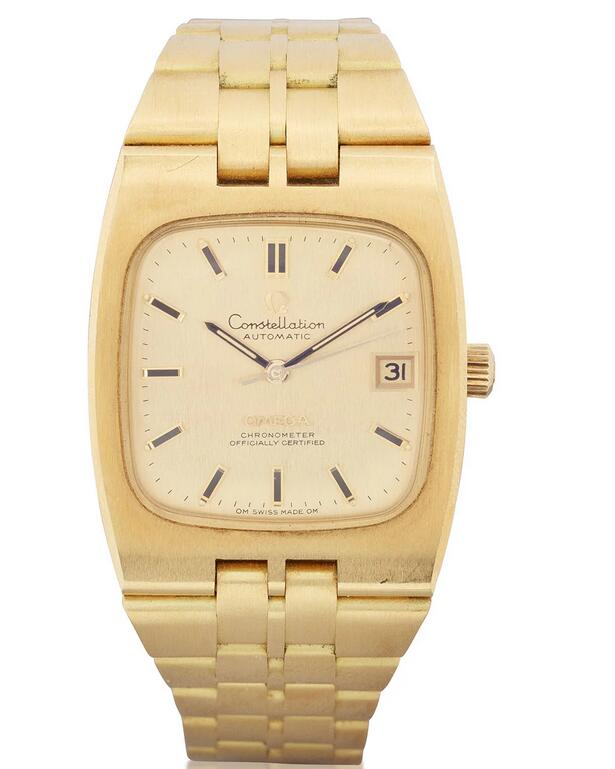
Throughout the 1950s and ‘60s, the luxury replica Omega Constellation watches stood alongside the Seamaster models as one of the flagships of the collection, the now-legendary Speedmaster having not yet made it to the moon to claim its preeminent position in popular culture. It was available in a variety of metals and dial iterations, the most lavish of which were the so-called Deluxe and Grand Luxe models, distinguished most often by their precious-metal bracelets. The familiar round case with pie-pan dial was eventually joined by other case shapes as well as simpler, more streamlined dials. In 1967, several years before Audemars Piguet introduced the Royal Oak and planted the seed for what we now call luxury sport watches, Omega introduced a Constellation (Ref. 368.0845/0847, above, photo via Sotheby’s) designed to integrate into its steel link bracelet, with inner bracelet links that fit into slots in the case between the lugs. The originator of this integrated design was Pierre Moinat, Omega’s then-Head of Creations, and originally protected by a patent; many still regard this version of the Constellation as the first “case-integrated bracelet watch.” As an interesting aside, Gérald Genta, renowned as the designer of the Royal Oak, also contributed to the designs of several Constellation models of the ‘60s, including the now-legendary “C-Type” with tonneau cases.
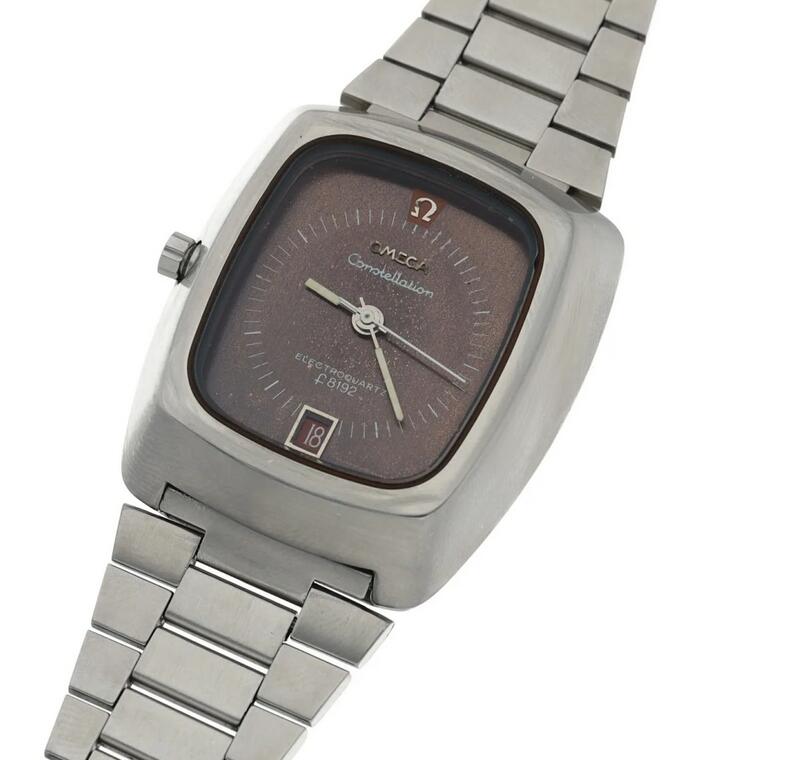
The 1970s ushered in a new era for watchmaking, as electronic, quartz-driven movements increasingly supplanted traditional mechanical calibers in new watch models. Omega jumped aboard the trend with the Constellation Electroquartz, equipped with the Swiss-made Beta 21 caliber. The first wave of analog Electroquartz models set the stage for even more radical, Space-Age “time computer” variations on the AAA China fake Omega Constellation watches, with digital LED and LCD time displays that spoke to the era’s consumers and competed with other high-tech digital timekeepers from the likes of Seiko, Hamilton, and Bulova.
1982: I’ll Take Manhattan
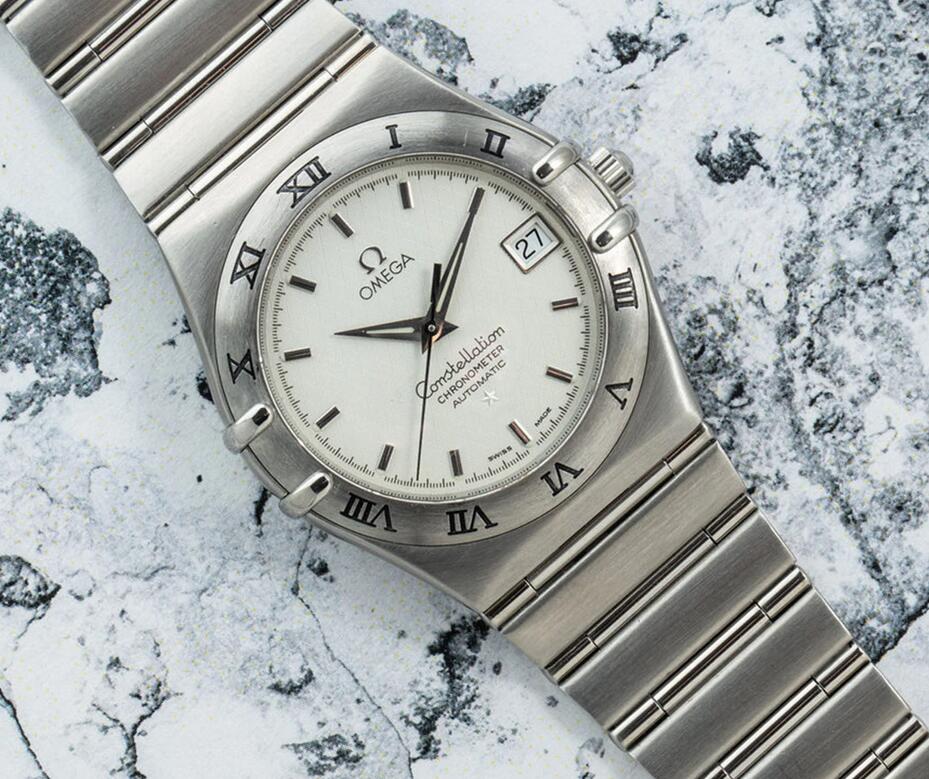
The Quartz Crisis was still in full swing in 1982 when Omega made the bold decision to redesign the Constellation, bringing one of its oldest model families back to its dressier, analog roots. The Swiss made replica Omega Constellation Manhattan series watches (vintage model above, via Analog:Shift), introduced many of the elements that define the Constellation today, while also carrying forth some of the aesthetic spirit introduced into the watch market by the aforementioned Royal Oak, Patek Philippe Nautilus, and other models that followed their lead. The case was thin, with scallop-shaped, indented facets at the top and bottom, and integrated smoothly into a monolink bracelet; the ultra-thin movement was quartz (Caliber 1422); and the Roman hour numerals were applied to the underside of the crystal. Most eye-catching were the parallel “claws” on either side of the bezel, which were actually screwed clamps to securely hold the bezel in place for increased water resistance by compressing the gasket under the crystal. All these notable elements — including the numerals inside the crystal, which allowed the crystal to sit closer to the dial — were in the service of the ultra-thin trend that predominated in the industry at the time.
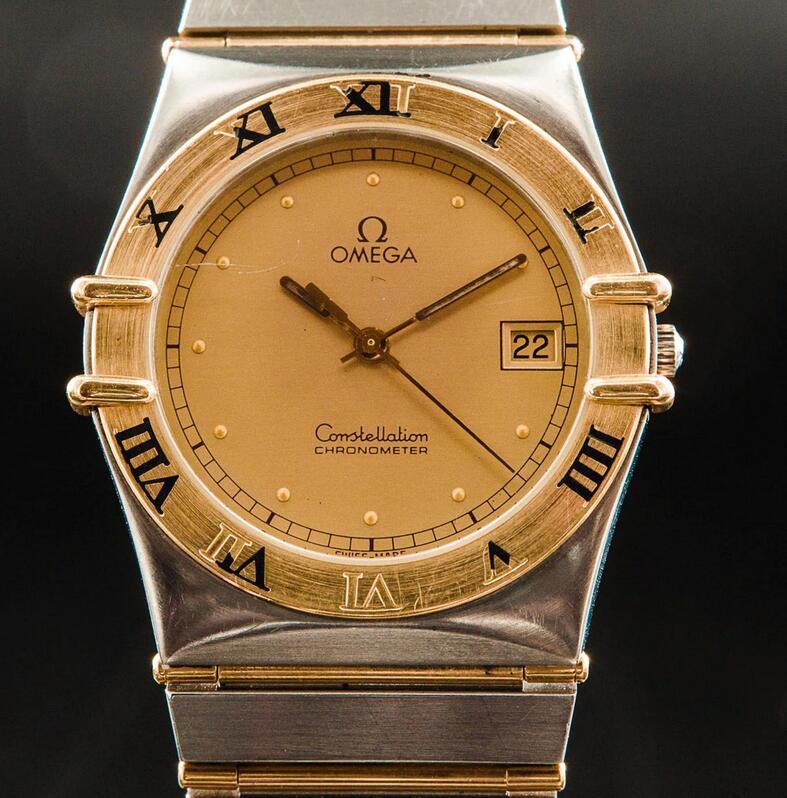
The first second-generation Constellation models with automatic movements came in 1984; these references housed the ETA 2892-2-based, chronometer-certified Caliber 1111 and were available in a variety of metals and combinations of steel and gold. The next major design innovation came in 1995, with the Roman numerals moving from the underside of the crystal to the bezel, engraved in the surface and interrupted only by the now-familiar (but now more decorative than functional) claws at 3 and 9 o’clock. In 2003, with a renewed interest in larger, sportier luxury Omega super clone watches for sale dominating the market, the Omega Constellation family welcomed the Double Eagle models, named after one of the most difficult achievements in the sport of golf and accordingly launched at that year’s European Masters. The Constellation Double Eagle was the first Constellation outfitted with one of Omega’s co-axial automatic chronometer movements, Caliber 2500. (Omega began equipping movements with the groundbreaking co-axial escapement, designed by the legendary British watchmaker George Daniels, in 1999, and nearly all Omega in-house movements use the technology today.) The Double Eagle design was relatively short-lived, superseded by another revamp of the Constellation collection in 2009.
2015: Mastering the Globe
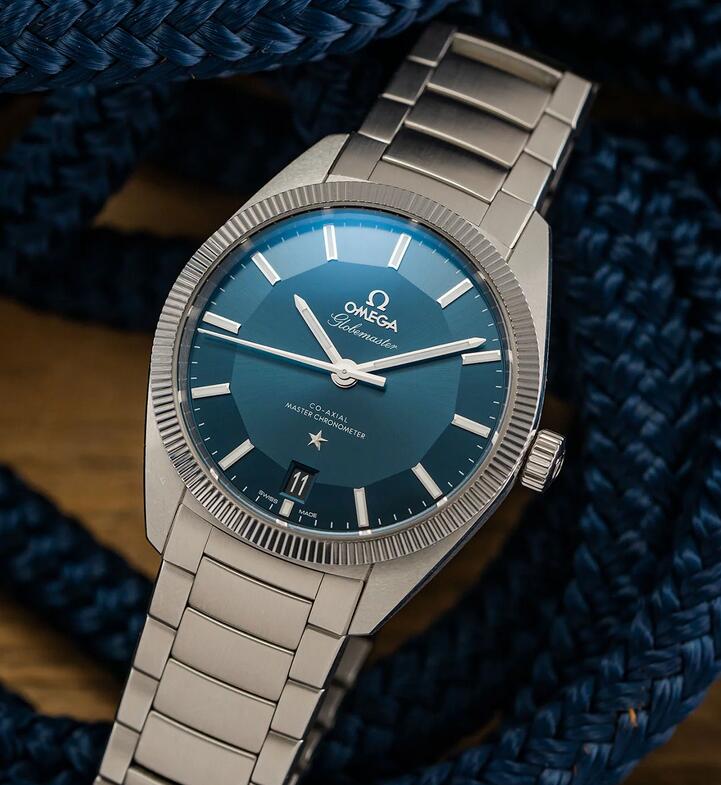
By 2015, the Constellation had settled decisively into a second-tier position among Omega’s watch collections despite it claiming the longest period in continuous production. The Speedmaster had fully embraced its historical reputation as the first watch on the moon, becoming one of the most beloved and collectible luxury wholesale Omega replica watches among enthusiasts. Meanwhile, the Seamaster had established itself (as of 1995) as the watch of James Bond for a new generation of moviegoers. However, when Omega was ready to launch its newest technical achievement in watchmaking, as it did at 2015’s Baselworld watch fair, it fittingly did so by incorporating it into an all-new extension of its oldest collection. The Constellation Globemaster was the first watch to contain a movement certified as a “Master Chronometer,” as defined by a strict set of criteria developed by Omega in cooperation with the Swiss Institute of Metrology, or METAS. To be designated a Master Chronometer, a watch must meet all the chronometer certification requirements of COSC, Switzerland’s main testing body for chronometric standards, as well as eight other criteria, including a resistance to magnetic fields up to 15,000 gauss, a benchmark that few Omega fake watches site had even attempted to meet. Except for a handful of watches from Rolex-owned Tudor, Omega is the only watchmaker to subject the majority of its movements to Master Chronometer testing. Omega Master Chronometer movements also incorporate the co-axial escapement that the brand uses almost exclusively.
It wasn’t only the movement, Omega’s Caliber 8900, that made the Constellation Globemaster such a milestone timepiece. The watch also resurrected some vintage elements from the first Constellations — like the cult-favorite “pie-pan” domed dial, the fluted bezel without engraved Roman numerals, a throwback to a 1968 model; and a relief engraving of an observatory’s cupola surrounded by eight stars, here applied to a medallion in the center of a sapphire exhibition caseback that offered a view of the movement and its elegantly decorated rotor. Following on the original Globemaster’s heels in 2016 was the Globemaster Annual Calendar, whose case was larger than its predecessor’s (41mm compared to 39mm), ensuring the “reverse pie pan” curve of the Annual Calendar’s sunburst dial was even more prominent. The dial’s clever design places elegant, cursive text for each of the 12 months between the hour markers and uses an added central hand to indicate the current month, with the date displayed in a window at 6 o’clock.
2020: Modern Gents
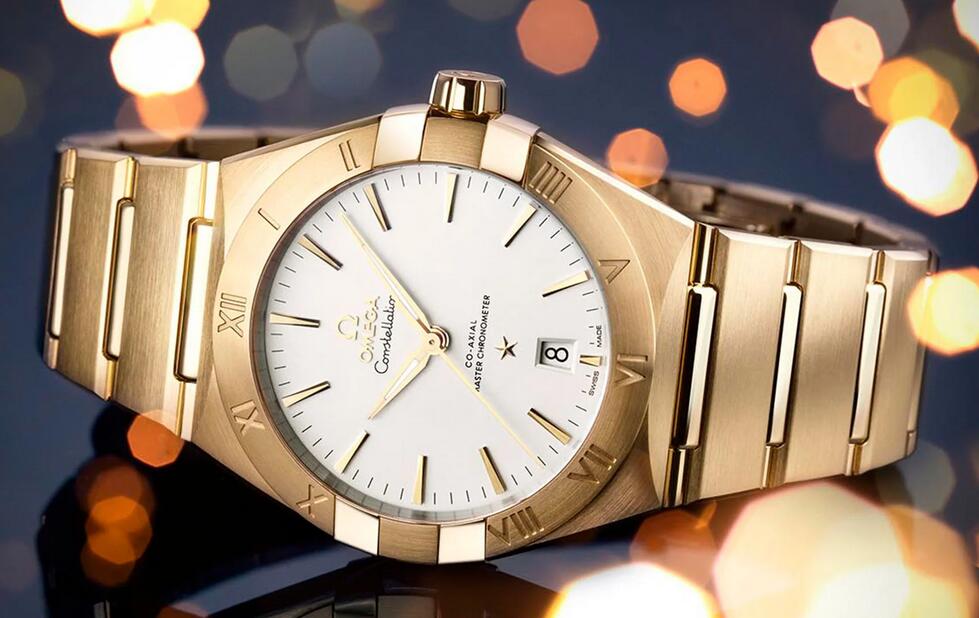
In 2020, Omega released a slew of new Swiss movements replica Omega Constellation Gent watches, more evocative of the 1980s versions than the Globemaster models, and equipped them all with Master Chronometer movements. The cases measured 39mm, with options in stainless steel, yellow gold, Omega’s proprietary Sedna gold alloy (first used on a Constellation model several years earlier, in 2013), and two-tone combinations of those metals. This most recent revamp, equipped with the Master Chronometer Caliber 8800, is notable for the polished and beveled edges along the case and bracelet; a slimmed-down bezel with a new font for the engraved Roman hour numerals; a more conical crown; and a thinner, more streamlined execution for the bezel “claws” that integrates them more elegantly into the design. Perhaps most noteworthy are the redesigned hands and hour markers, which Omega says are visually inspired by the triangular facets of the Freedom Tower in New York City — most likely a tribute to the modern Constellation’s roots in the “Manhattan” series. The bracelet has also been revamped, with new mid-bar bracelet links and a comfort-release function; Omega also offers many of the models on leather straps.
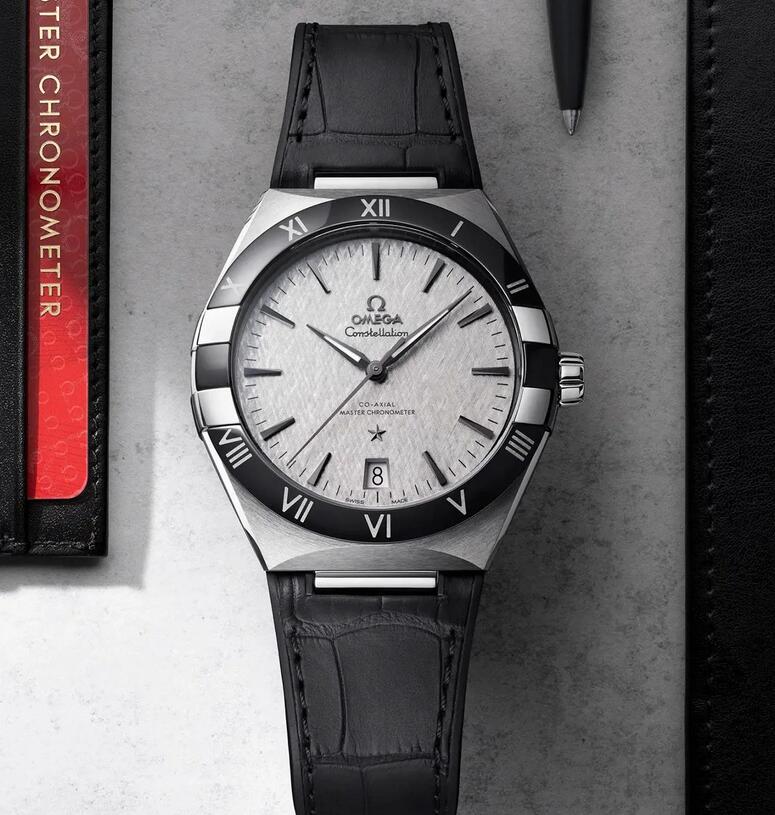
Later that same year, Omega unveiled more iterations of the Constellation Gent whose cases were slightly enlarged, to 41mm, and which showcased new, modern materials for both the case and strap. The bezels of the 41mm models (as above) are made of polished ceramic and feature engraved Roman hour numerals in either Liquidmetal or in Ceragold, both proprietary materials exclusive to Omega and its parent, the Swatch Group. Rather than monolink bracelets, the larger ceramic-bezel Omega Constellation fake watches for men are mounted on leather straps with linings of antibacterial rubber for optimum wrist comfort, which connect to the case via a specially designed metal link. The straps are engineered to be interchangeable not only with each other but also with the bracelets on the 39mm models — a boon for contemporary watch enthusiasts accustomed to easily achieving different “looks” with the same watch, and another sign that Omega’s oldest product family continues to evolve with the times.

